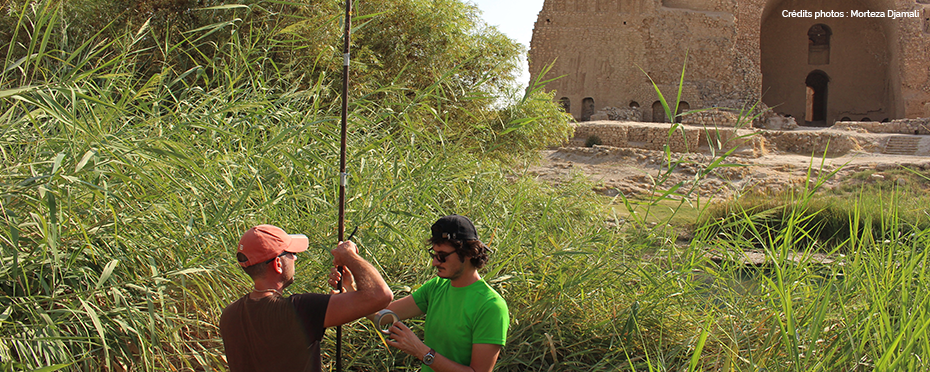
The AQUA-IGNIS project by Morteza Djamali and Nicolas Faucherre, labelled by the A*Midex Foundation as part of the "International 2018" call, started its activities in October 2019. This project strengthens Aix-Marseille's cooperation with the University of Chiraz in Iran, the Iranian National Institute for Oceanography and Atmospheric Sciences and the University of Bologna in Italy.
The project led by Dr. Morteza Djamali, and scientifically co-sponsored by Prof. Nicolas Faucherre, was selected on 18 March 2019 by the Steering Committee of the A*Midex Foundation within the framework of the A*Midex "International 2018" call for projects. This call aims to structure and strengthen the international cooperation of Aix-Marseille University and A*Midex partners through the support of international research, development and innovation projects with high strategic potential.
The project entitled "The First City of the Last Empire: Geoarchaeology of the Sasanian Circular City of Gur (Iran)" (AQUA-IGNIS) aims to reconstruct the genesis of the circular city of Firouzabad (Iran) and its surroundings in late antiquity. It will provide a unique opportunity to understand how and in what context an urban centre is created and how its creation has impacted its environment. Firuzabad was the first urban administrative centre established during the last Persian empire, the Sassanid Empire (224-651 AD). The site is included in the list of Sassanian monuments of the Iranian province of Fars inscribed on the World Heritage List since 4 July 2018. Archaeologists and historians have many questions concerning the construction of the circular city (2 km in diameter) of Gur, built ex nihilo in the year 224 or earlier in the middle of the irrigated plain of Firouzabad, surrounded by the Zagros mountains, by King Ardashir, the first Sassanid king. These questions concern in particular environmental factors and impacts: the factors that may have caused the abrupt transition from the Parthians to the Sassanids, the environment and hydraulic factors that may have determined the choice of this location for the first capital of the Sassanid Empire, the impact of its urbanization on its environment and the factors of its rapid abandonment a few generations later. A multidisciplinary geo-archaeology and a paleo-environmental methodology are envisaged in conjunction with the methods of built archaeology and topography to answer these questions, involving three partner universities in France, Iran and Italy and an Iranian National Institute. With this project, the site of Aix-Marseille contributes to the conservation of a World Heritage Site (UNESCO).
The project is implemented at the Mediterranean Institute of Biodiversity and Marine and Continental Ecology (IMBE) in Aix-Marseille (UMR AMU-CNRS-IRD-AU), in conjunction with teams from the Laboratoire d'Archéologie Médiévale et Moderne en Méditerranée (LA3M) in Aix-Marseille (UMR AMU-CNRS) in partnership with the University of Chiraz in Iran, the University of Bologna in Italy, and the Iranian National Institute for Oceanography and Atmospheric Sciences (Iran).
AQUA-IGNIS started on October 1, 2019 for a period of 24 months. Over this period, the project will be subsidised by the A*Midex Foundation to the tune of 81,800 euros.
Photo credits : Morteza Djamali

